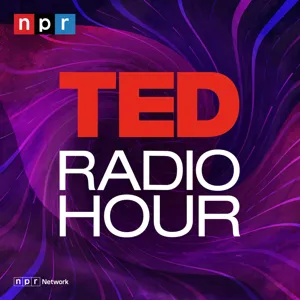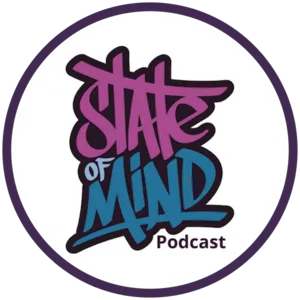Podcast Summary
Emphasizing the importance of community connections: Building relationships and relying on community support are vital for personal growth and preparedness. Engage with local networks, podcasts, and brands to foster connections and learn from others.
Building and strengthening community connections is essential for personal growth and preparedness. Neighbor to Neighbor, a California volunteer network, emphasizes the importance of relying on the people around us for social bonds and support during challenging times. Meanwhile, platforms like podcasts, such as Conversations with UNT and the Black Effect Podcast Festival, offer opportunities for connection and learning. Brands like Nissan and the UPS Store also play a role in facilitating community engagement and support. In the end, no matter where life takes us, it's crucial to remember the power of community and the connections we make with others.
The Meaning of the Halo in Art and Religion: The halo, a common symbol in religious art, has an ambiguous meaning and may not have been understood by depicted beings. Its significance varies historically and culturally.
The halo, a common artistic convention in religious art, may not have a clear or universal meaning. It can range from a subtle glow to an all-encompassing nimbus, and its presence on certain organisms in paintings might not have been understood by the depicted beings themselves. The halo's similarity to depictions of gods from various religions and cultures might lead to intriguing theories, but it's important to remember that the halo is an artistic convention, and its meaning may have varied throughout history and across different cultural contexts. The debate over ancient Egyptian headcones serves as an interesting parallel, as the meaning of these cones in art has long been debated, with some theories suggesting they were symbolic rather than physical objects. The study of the halo and its historical and cultural significance is a fascinating exploration of the intersection of art, religion, and human perception.
The depiction of halos in art and culture has evolved throughout history: Halos have been depicted as subtle glimmers, physical objects, and elusive concepts in art and culture, reflecting the cultural context and artistic styles of the time.
The representation of halos in art and culture has evolved significantly throughout history, from subtle glimmers to physical objects. The analogy to ancient Egyptian headcones sparked a deeper exploration of the meaning and symbolism behind halos. While some depictions make holiness seem obvious or even comical, others suggest that it's a subtle, elusive concept. For instance, Caravaggio's Madonna di Loreto features a faint halo that stands out due to its contrast with the background. In contrast, some fantasy literature portrays halos as appearing only at certain moments, adding an element of mystery and magic. However, the depiction of halos as physical objects, such as discs or rings, was common in some artistic traditions. Ultimately, the interpretation of halos reflects the cultural context and artistic styles of the time, revealing the complex and multifaceted nature of religious symbolism.
Symbol of divine presence with a halo or aureole: Halos and aureoles are symbols representing divine or holy presence, often depicted as a circular area of light or golden color around a revered figure's head or body.
The halo is a symbol of divine or holy presence, represented as a circular area of light or golden color surrounding the head of a revered figure. The term is interchangeable with Aureole, which can also refer to a full body glow or radiant cloud. Halos and aureoles have varying interpretations, from physical plates or halos to cosmic entities or portals to another realm. The language surrounding these symbols can be loose, but generally, a halo refers to the disc or ring of light around the head, while an aureole includes the full body being surrounded by a glow or golden shine. Modern photography and artistic depictions often use positioning and lighting to create halo-like effects. Interestingly, in contemporary politics, photographs of presidential candidates or presidents often feature the presidential seal behind their heads, creating a halo-like effect.
The 'presidential halo' in photos is due to the circular presidential seal, not a deliberate attempt: The 'presidential halo' in photos is an unintentional effect caused by the circular presidential seal, not a deliberate attempt to give the president a divine glow.
The presence of a "presidential halo" in photographs of the U.S. president is a common issue that has been around for a while, and it's not a deliberate attempt to give the president a divine glow. The halo effect is created due to the circular shape and positioning of the presidential seal behind the president, which photographers find difficult to avoid while trying to frame visually appealing shots. The issue is that if they get too close to the subject, they lose the sense of context and location, and if they pan out more, the photo may not be suitable for various uses. The real solution might be having a more visually interesting background for the president, but for now, the halo is largely unavoidable. It's important to remember that this effect is not unique to the Christian faith, but rather an older and more widespread tradition of depicting the radiance around the head or body of an interesting or important figure throughout world mythology. So, the next time you encounter photographs with unintended or intended halos, share them with us in the Stuff to Blow Your Mind discussion module on Facebook.
Building meaningful connections within communities: Engage in volunteer work, help neighbors, listen to podcasts, and use allergy relief products to focus on building relationships and improving lives.
Building meaningful connections within your community can bring hope and preparedness in uncertain times. Neighbor to Neighbor, a California volunteers network, encourages people to help each other grow their community by lending a helping hand or standing together during natural disasters. Astepro, a fast-acting nasal allergy spray, can help individuals get relief from their symptoms, allowing them to focus on building these connections. The importance of community is further emphasized through podcasts like "A Really Good Cry," where people can have conversations to help each other process emotions and find ways to move forward. The circular halo, a symbol of divinity and enlightenment, highlights the irresistible fascination with the shape of the sun, moon, and our own pupils, emphasizing the interconnectedness of all things. By focusing on building relationships, seeking relief from allergies, and finding inspiration through media, we can all make a positive impact on our communities and our own lives.
From secular to sacred: The history of halos in religious art: Halos, originally used for secular figures, became a symbol of holiness and divinity for religious figures in Christian art due to ancient pagan influences.
The use of circular shapes and halos in religious art, particularly in Christianity, can be traced back to ancient observations of natural phenomena, such as solar halos, and the long-standing association of celestial objects with the divine. Before the 5th century CE, halos were used to depict secular figures, such as kings and emperors, in the Greco-Roman world. However, with the rise of Christianity, this symbolism was reversed, and religious figures began to be depicted with halos, while secular figures were no longer shown with this divine attribute. This shift can be explained by the influence of ancient pagan iconography and the adoption of circular shapes and halos as symbols of holiness and divinity. The paper "The Nimbus in Eastern Art" by Tavenore Perry, published in 1907, provides insight into the historical development of this symbolism.
The halo's history: From ancient cultures to Christian art: The halo originated in ancient cultures as a symbol of divine power and status for rulers. Christianity adopted the halo to represent holiness and divinity for saints.
The use of halos in Christian art has a complex history with influences from various ancient cultures, including Mesopotamia, Persia, Greece, Rome, and Zoroastrianism. Initially, halos were used to signify divine power and goodwill for rulers in Mesopotamia and Persia. The Greeks and Romans adopted this symbol and used it to represent their rulers' divine status. Later, Christianity adopted the halo from the Roman tradition, and it became a symbol of holiness and divinity for saints. The halo's significance evolved over time, and while it was once necessary to identify saints in art, later artists like Caravaggio found other ways to convey divinity beyond the use of halos. Overall, the halo's history reflects the interconnectedness of different cultures and the enduring power of symbols to convey meaning and significance.
The role of religious art in conveying complex theological ideas: Religious art, including symbols like halos or auras, has been used throughout history to convey complex theological ideas that may be difficult to express through language alone.
Religious art, including the use of symbols like halos or auras, has played a significant role in conveying complex theological ideas that may be difficult to express through language alone. This can be seen in various artistic traditions throughout history, such as the representation of deities in Hinduism, Buddhism, and Christianity. For instance, in the older Christian tradition, halos or other symbols on religious figures were interchangeable and looked similar to wealthy people of the time. However, artists like Caravaggio began to make these figures look more like real people, adding depth and meaning to the images. One of the oldest analogs to the image of the halo can be found in ancient Mesopotamian mythology, specifically in the story of Gilgamesh. In this story, Gilgamesh and his companion Enkidu must travel to the cedar forest to slay the monstrous giant Huwawa or Humbaba. Huwawa is described as having multiple layers of protection, which can be interpreted as armor or auras that inflict terror on his enemies. This use of symbols and visual representation to convey complex ideas is a common thread throughout religious art and continues to be an important aspect of various artistic traditions around the world.
The Debate Over Huwawa's Magical Auras: Ancient myths depict characters with living cloaks or magical auras as protective armor, inspiring modern fictional characters like Doctor Strange and Spawn.
In ancient mythology, there exists a creature named Huwawa, who is protected by seven magical auras or terrors. These auras act as both defense and offense, and can be taken off and on. Gilgamesh, the hero in the story, manages to acquire these auras by offering gifts and flattery to Huwawa. However, after defeating the creature, there is a debate between Gilgamesh and his companion Enkidu about whether to chase after the auras or kill Huwawa. The auras are described as radiant and numinous, and Gilgamesh is determined to capture them. This ancient myth shares similarities with modern fictional characters, such as Doctor Strange and Spawn, who also possess living cloaks or capes. The idea of animate cloaks or magical auras being used as protective armor is not a new concept and has been present in various traditions throughout history.
Ancient Mesopotamian belief in the supernatural aura or halo (Melam): Ancient Mesopotamians believed in a supernatural aura or halo (Melam) that represented overwhelming power, affecting humans with awe and fear, and was worn by gods, heroes, kings, temples, and demons.
In ancient Mesopotamian religion, the concept of aura or halo, referred to as Melam, was believed to be a supernatural, overwhelming power exuded by gods, heroes, kings, temples, and even demons. This Melam was described as a brilliant, terrifying, awe-inspiring phenomenon of light that could physically affect humans, causing a creeping of the flesh (Ni). Gods were believed to wear their Melam like a garment, which could be taken off or shed. While Melam represented supernatural power, it was not inherently good, as both revered gods and monstrous demons wore it. The exact meaning and origin of Melam remain unclear, leaving room for speculation on its basis in natural phenomena, human psychology, or pure imagination. The concept adds a layer of mystery and magic to ancient Mesopotamian mythology and stories.
Exploring new ideas and adapting to change: Embrace change and new perspectives for potential growth and discovery, even if they're not universally accepted at first. Look to ancient Egypt for inspiration on the enduring power of new ideas.
There's value in embracing change and new perspectives, even if they're not universally accepted at first. Whether it's a new podcast, a shift in religious beliefs, or a reality TV competition, the potential for growth and discovery is worth pursuing. In ancient Egypt, for instance, King Aten tried to introduce the worship of the sun disc Aten as the sole deity, but it was an unpopular move. However, the idea of the sun disc as a symbol of power and divinity continued to appear in Egyptian iconography, from Nut, the sky goddess, to various pharaohs. The sun disc, represented as a halo or a disk between horns, became a common motif in Egyptian art. So, don't be afraid to explore new ideas and adapt to change, as it might lead to something truly meaningful. Tune in to podcasts like The Bright Side and MTV's Official Challenge Podcast to stay updated on the latest trends and conversations.
Ancient Egyptian religion uses symbols like sun disc to represent deities' roles and identities: Ancient Egyptians used sun disc symbols to signify deities' connections to the sun god and their divine lineage.
Ancient Egyptian religion makes extensive use of symbols, including the sun disc, to represent the roles and identities of their deities. For instance, the goddess Hathor, who is associated with the sun god Ra, is often depicted with a sun disc between cow horns on her head. Her offspring, the Apis bull, also bears this symbol, indicating their connection to the sun god. This use of symbols to convey divine lineage or alignment is seen in other deities as well. The similarities between these ancient Egyptian symbols and later religious iconography, such as the Christian halo, have led to debates about potential influences. However, it seems that these symbols may represent independent cultural developments rather than direct influences. Another interesting example of halo-like iconography can be found in the Achaean halo from the Iliad, further demonstrating the prevalence and versatility of this symbolic motif in ancient cultures.
The emotional bond between Achilles and Patroclus leads to Achilles' transformation: The ancient Greek myth of Achilles and Patroclus showcases the intensity of their emotional bond, resulting in Achilles' vengeance and divine intervention, symbolized by his radiant light.
The ancient Greek myth of Achilles and Patroclus illustrates the depth of their emotional bond, which is depicted as a powerful force that drives Achilles to madness, rage, and vengeance after Patroclus' death. The gods, specifically Athena, intervene to help Achilles avenge his companion, and in the process, Achilles is imbued with divine light that strikes fear into the hearts of the Trojans. This radiance, reminiscent of halos in later religious art, symbolizes the intense emotion and divine intervention in the story. However, despite the awe-inspiring light, Achilles is not portrayed as an enlightened figure, but rather one consumed by grief and rage. This myth highlights the transformative power of emotions and the role of the divine in ancient Greek mythology.
Symbols of divine radiance and focus: Halos, auras, and similar symbols in various religions and cultures represent divine radiance, connection to nature, and practical necessities for focusing attention. Artists have adapted and reinvented these symbols throughout history.
Halos, auras, and similar symbols in various religious and cultural traditions serve multiple purposes. They represent divine radiance, connection to the natural world, and practical necessities for focusing attention. From Buddhist statues with flaming halos inspired by the Bodhi tree, to Hindu Prabhapandala with intricate designs and ornate frames, to Christian halos and Islamic nimbus, these symbols convey different meanings and interpretations. The practical aspect of framing the subject and guiding the viewer's focus is also an essential function. For instance, in the dance of Shiva, the nataraja statue is framed with a large hoop halo made of flames. The evolution of these symbols throughout history shows the creative freedom of artists to adapt and reinvent them within their respective traditions.
Exploring the Meaning and Emotion of Halos in Media and Culture: Halos can convey various meanings and emotions, from divine power to playfulness, and their significance is worth exploring in art, archaeology, fiction, and more. Share your favorite examples and join the next episode for a deeper dive.
The use of halos in various forms of media and culture can convey different meanings and emotions, from divine power and enlightenment to playfulness and fun. This was discussed in relation to the Mortal Kombat game and its goddess character Setrion, as well as luchador wrestlers who incorporate Catholic imagery. The importance of these symbols was emphasized, and it was suggested that listeners share their favorite examples of halo iconography in art, archaeology, fiction, and more. The next episode will delve deeper into the optics of halos, and listeners are encouraged to explore the topic further and share their discoveries. The episode also mentioned Neighbor to Neighbor, a California volunteer network that aims to help communities connect and support each other, and Sleep Tight Stories, a weekly podcast that provides calming bedtime stories for children.
Exploring Intergenerational Connections through Podcasts: Podcasts like SleepTight stories and Mini Questions foster intergenerational conversations, providing unique insights, fostering relationships, and promoting wisdom sharing.
Intergenerational conversations can provide unique insights and perspectives. The SleepTight stories podcast on Across Generations, hosted by Tiffany Cross, brings together a seasoned elder, a middle-aged person, and a young soul for engaging discussions. Meanwhile, Minnie Driver's podcast, Mini Questions, invites guests to answer the same 7 questions, leading to diverse responses. Both podcasts emphasize the importance of intergenerational connections and the value of listening to different voices. These conversations can foster sisterhood, friendship, wisdom, and laughter, and can be accessed on various podcast platforms. So, consider tuning in to learn from the experiences and perspectives of individuals from different generations.






